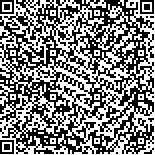李文竹,袁云,肖江喜,王宁华.贝氏肌营养不良症与杜氏肌营养不良症患者骨骼肌脂肪浸润程度的对比研究[J].中华物理医学与康复杂志,2016,38(9):697-701
扫码阅读全文

|
| 贝氏肌营养不良症与杜氏肌营养不良症患者骨骼肌脂肪浸润程度的对比研究 |
|
| |
| DOI: |
| 中文关键词: 肌营养不良 肌,骨骼 脂肪浸润 |
| 英文关键词: Muscular dystrophy Muscles, Skeletal Fatty infiltration |
| 基金项目: |
|
| 摘要点击次数: 2573 |
| 全文下载次数: 5537 |
| 中文摘要: |
| 目的分析贝氏肌营养不良症(BMD)患者大腿骨骼肌在磁共振成像(MRI)上所显示的骨骼肌脂肪浸润规律,探讨其与杜氏肌营养不良症(DMD)患者之间的差异,为针对性康复治疗提供指导依据。 方法纳入23例BMD患者和47例DMD患者,所有患者均未经糖皮质激素治疗,均行双侧大腿骨骼肌MRI检查,并通过T1加权成像和应用改良的Mercuri分级评分法,对骨骼肌脂肪浸润程度进行0~5分的6级评分。采用描述性统计分析BMD的骨骼肌脂肪浸润进展程度,采用秩合检验分析BMD和DMD的组间差异。 结果BMD患者大收肌的重度脂肪浸润所占百分比最高,而后受累的依次为股二头肌、股四头肌、半膜肌和半腱肌,缝匠肌、股薄肌和长收肌的重度脂肪浸润所占百分比最低。BMD患者的大收肌、股二头肌和股四头肌在8~9岁可见中到重度脂肪浸润,半膜肌和半腱肌在10~11岁可见中到重度脂肪浸润,缝匠肌、股薄肌和长收肌在15岁以后可见轻到中度脂肪浸润。BMD组骨骼肌脂肪浸润程度评分总和的中位数在8、9、10和11岁依次为10、22、28和25分,DMD组依次为29、34、34和30分。BMD与DMD相比,8岁患者的脂肪浸润程度评分在大收肌(P=0.017)、股二头肌(P=0.013)、股外侧肌(P=0.021)、股直肌(P=0.007)、股内侧肌(P=0.008)、股中间肌(P=0.009)及评分总和(P=0.011)之间的差异均有统计学意义;9岁患者的脂肪浸润程度评分在大收肌(P=0.007)、股直肌(P=0.013)、股内侧肌(P=0.028)、股中间肌(P=0.028)及评分总和(P=0.020)之间的差异具有统计学意义。 结论BMD患者的大腿骨骼肌脂肪浸润存在一个特定受累模式,相同年龄的BMD与DMD患者骨骼肌脂肪浸润程度存在差异,可以协助指导BMD及DMD患者的康复治疗。 |
| 英文摘要: |
| Objective To analyze the characteristics of fat infiltration into the muscles of patients with Becker and Duchenne muscular dystrophy (DMD) so as to provide a guide for rehabilitation therapy. MethodsTwenty-three children with Becker muscular dystrophy (BMD) and 47 with DMD who had never been treated with glucocorticoids were enrolled. MRI was performed on both of their thigh muscles. T1 weighted images were used to assess the fat infiltration of their thigh muscles using a 0-5 modified version of Mercuri′s scale. The progression of fatty infiltration of the thigh muscles in BMD was analyzed using descriptive statistics. The differences in fat infiltration between BMD and DMD were analyzed using rank sum tests. ResultsIn patients with BMD the adductor magnus most often showed severe fat infiltration, followed by the biceps femoris, quadriceps, semimembranosus and semitendinosus, while the sartorius, gracilis and adductor longus had the lowest percentages of severe fat infiltration. Among the BMD patients the adductor magnus, biceps femoris and quadriceps showed moderate to severe involvement at the age of 8 to 9. The semimembranosus and semitendinosus showed moderate to severe involvement at the age of 10 to 11, and the sartorius, gracilis and adductor longus showed mild to moderate involvement after 15 years of age. Among the age groups of 8, 9, 10 and 11 years old, the median total fat infiltration scores were 10, 22, 28 and 25 respectively among the BMD patients, and 29, 34, 34 and 30 respectively among the DMD patients. At age 8 significant differences between the BMD and DMD patients were observed in the infiltration scores of the adductor magnus, biceps femoris, vastus lateralis, rectus femoris, vastus medialis, vastus intermedius and in the total scores. At age 9 significant differences persisted in the scores of the adductor magnus, rectus femoris, vastus medialis, vastus intermedius and the total scores. ConclusionsThe muscle MRIs showed significant differences in the degree of fatty infiltration between BMD and DMD patients. These findings may be useful when designing therapeutic regimens and rehabilitation programs for patients with BMD and DMD. |
|
查看全文
查看/发表评论 下载PDF阅读器 |
| 关闭 |
|
|
|